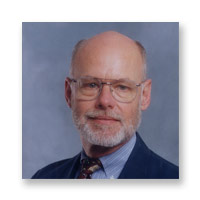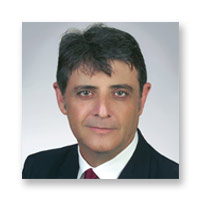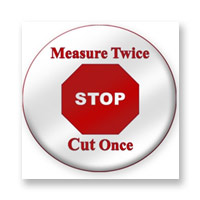First, Do No Harm
A new multicollege course for graduates students, the first of its kind at USF, taps into a team approach for improving patient safety
University of South Florida senior medical student Lonna Gordon knows a thing or two about medical mistakes. Gordon worked as a retail pharmacist before entering medical school.
“So many times I received prescriptions to fill and the amount was dead wrong – the dosage was actually toxic,” said Gordon.
She recalls one time she had to be very persistent about calling and talking her way through several emergency room staffers before she was finally able to speak to the physician who had written a prescription for 0.5 mg of Clonidine three times a day – an exceedingly high dosage for that blood pressure medication. Noticing that the patient waiting in the pharmacy for her to fill the prescription appeared agitated, Gordon questioned whether the ER doctor meant to write the script for Klonopin, a medication used to treat anxiety. He had.
Gordon was one of the first students to sign up for USF’s new interdisciplinary course Human Error and Patient Safety, which will bring together graduate students from the Colleges of Medicine, Nursing, Public Health, Engineering (industrial engineering), and Arts and Sciences (aging studies, anthropology, communication, psychology, social work). The three-month course, starting Aug. 27, will be the first of its kind at USF, and possibly the country, said Peter Fabri, MD, PhD, associate dean for graduate medical education at USF.
Part of the “Year of Patient Safety” initiative at USF, the course is intended to be one important step in laying the educational foundation needed to promote a culture of patient safety.
“I’m really excited about this course,” said Dr. Fabri, a surgeon who holds a doctorate in industrial engineering with an emphasis on patient safety. “We have a unique ability to make a real difference.”
A leading cause of death and injury
The 1999 Institute of Medicine report To Err is Human estimated that avoidable errors in U.S. hospitals were killing 44,000 to 98,000 Americans a year and injuring thousands more. These “adverse events” include everything from wrong-site surgery, anesthesia-related mistakes and treatment delays to medication errors, patient falls and deaths related to patient transfers.
“If you accept the data in the IOM report, that would be the equivalent of one jumbo jet filled with passengers crashing every day for a year.” Dr. Fabri said. “And that doesn’t count hundreds, if not thousands of near misses that occur in our hospitals every day.”
Dr. Fabri will co-direct the course with Jay Wolfson, JD, PhD, a distinguished service professor of public health and medicine director of the Suncoast Center for Patient Safety at USF. They are assisted by a steering committee of multi-college faculty instructors comprised of Karen Liller, PhD, associate dean of public health; Mary Webb, PhD, associate dean of nursing; Eric Eisenberg, PhD, interim dean of arts and sciences; and Jose Zayas-Castro, PhD, professor and chair of industrial and management systems engineering.

Combining lectures, case study discussions and renowned visiting experts in patient safety (see link to experts at end of story), the course is designed to promote teamwork by putting students in interdisciplinary groups to work on patient safety projects. In fact, the first class will be launched with a session and practical exercises, led by Michael Brannick, PhD, of USF Industrial/Organizational Psychology, on how to function effectively as a team member. Over the semester each team will develop a recommendation to resolve a real patient safety problem identified by Tampa General Hospital.
Typically, medicine has viewed all errors as failings – expecting clinicians to be fault-free and blaming and shaming individuals when a mistake occurs.
Some have argued this punitive approach provides an incentive for health care professionals not to report their mistakes or those of colleagues. In addition, the “captain of the ship” culture in which physicians are trained and practice may inhibit other health care workers from speaking out when they notice an error is about to occur.
Improving patient safety a team effort
The IOM report prompted legislative and regulatory initiatives designed to analyze, report and monitor medical errors and search for solutions. But the educational aspect needed to create a cultural shift toward patient safety has lagged, said Dr. Fabri.
“In spite of all the rhetoric about teamwork, our country’s medical students are still trained to be autonomous, not team players. So we’re preparing highly competitive individuals, when what we need are professionals who can work together for a common good — the best outcome for the patient,” he said. “The only way you can change culture is to bring people with different skill sets together so they can begin talking about patient safety problems and thinking outside the box of their traditional disciplines.”
Medical student Gordon is looking forward to learning other students’ perspectives about ways to improve patient safety. “Physicians don’t have enough time or all the expertise to do everything their patients need. In order to effectively and safely deliver care you have to collaborate with others, and most of us have not been trained how to do that…. It’s important for health professionals not to antagonize each other, but to help strengthen and act as checks and balances for one another.”
Students from each discipline will bring something of value to the table when it comes to strategies for reducing health-related errors, say faculty involved in the new course.

USF surgical residents at Moffitt Cancer Center use a whiteboard to list specifics such as site of impending surgery, any medications that could affect the operation’s safety, medical risk factors and names of all the staff working the OR case.
While physicians and, to some extent nurses, are primarily focused on the health and well being of individual patients, public health professionals take a broader, population approach and emphasize prevention, said the College of Public Health’s Dr. Liller. “How could this one improvement impact the safety of the patient population? What might we do in the first place that could prevent that error from ever happening again?”
Industrial engineers are trained to figure out how to do things better. They consider aspects of human behavior when engineering systems to improve quality and productivity in working environments, said the College of Engineering’s Dr. Zayas-Castro. When it comes to designing patient safety solutions, getting to know the challenges, constraints, concerns and viewpoints of health care professionals who work on the frontlines of patient care is as valuable as being able to quantify processes and measure data, he added. “The level of complexity in any clinical organization or healthcare facility today makes it extremely difficult to derive the best solution with just one viewpoint or discipline.”
Confronting the inevitability of error
Dr. Wolfson goes so far as to say the course might actually help protect future physicians from malpractice suits — maybe even save their licenses. “Doctors talk to people all day long, but they don’t communicate very well,” he said. “The single most significant variable associated with adverse events and the bringing of successful malpractice cases to court has been poor communication.

“Our goal is to help students understand that patient safety is an interdisciplinary issue requiring them to think critically before they act, communicate with lots of people, and take nothing for granted,” Dr. Wolfson said.
While there is no entirely risk-free environment, Dr. Wolfson said, much can be done to mitigate error through such measures as changing medication shapes or colors to help prevent mixups and confusion about dosages and developing standardized checklists for surgery. “Health professionals can’t prevent all errors, but we can certainly identify where and when most errors occur and build in better systems to reduce their likelihood,” he said. “And, equally important, we have an obligation to fix something as soon as we realize it’s wrong. By exercising that obligation we’ll help create more trust in the health care system.”

The slogan for the USF Year of Patient Safety initiative is “Measure Twice, Cut Once.” The proverb originated with carpenters as a reminder that if you cut wood improperly the piece is ruined. In other words, it’s faster and better to double-check than make a mistake.
Dr. Fabri says that finding ways to make impending errors transparent may be the most effective way to prevent more errors from happening. Before they can do that, physicians, nurses and other health professionals need to accept the idea that error is an inevitable part of the human condition, even among highly trained, conscientious individuals. “Overconfidence in the system can be disastrous,” he said. “Human beings, by their very nature, will always make mistakes. So, we need to train our students to recheck what they do and recheck what their colleagues do, to speak up if they have doubts, and to be constantly vigilant.”
– Story by Anne DeLotto Baier/USF Health Communications
Related links:

